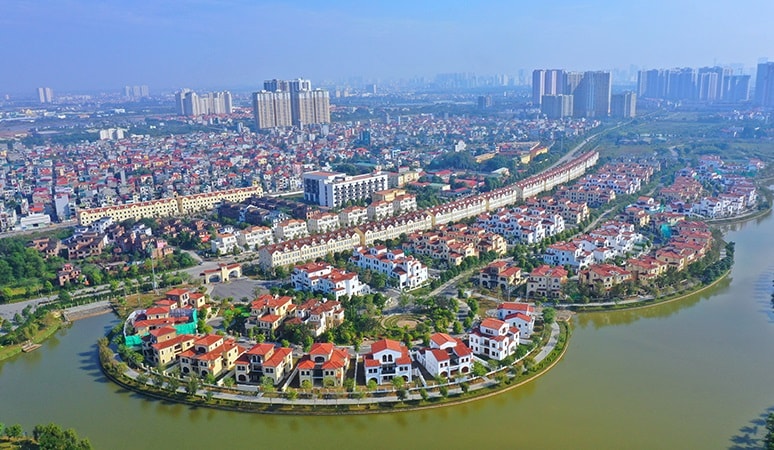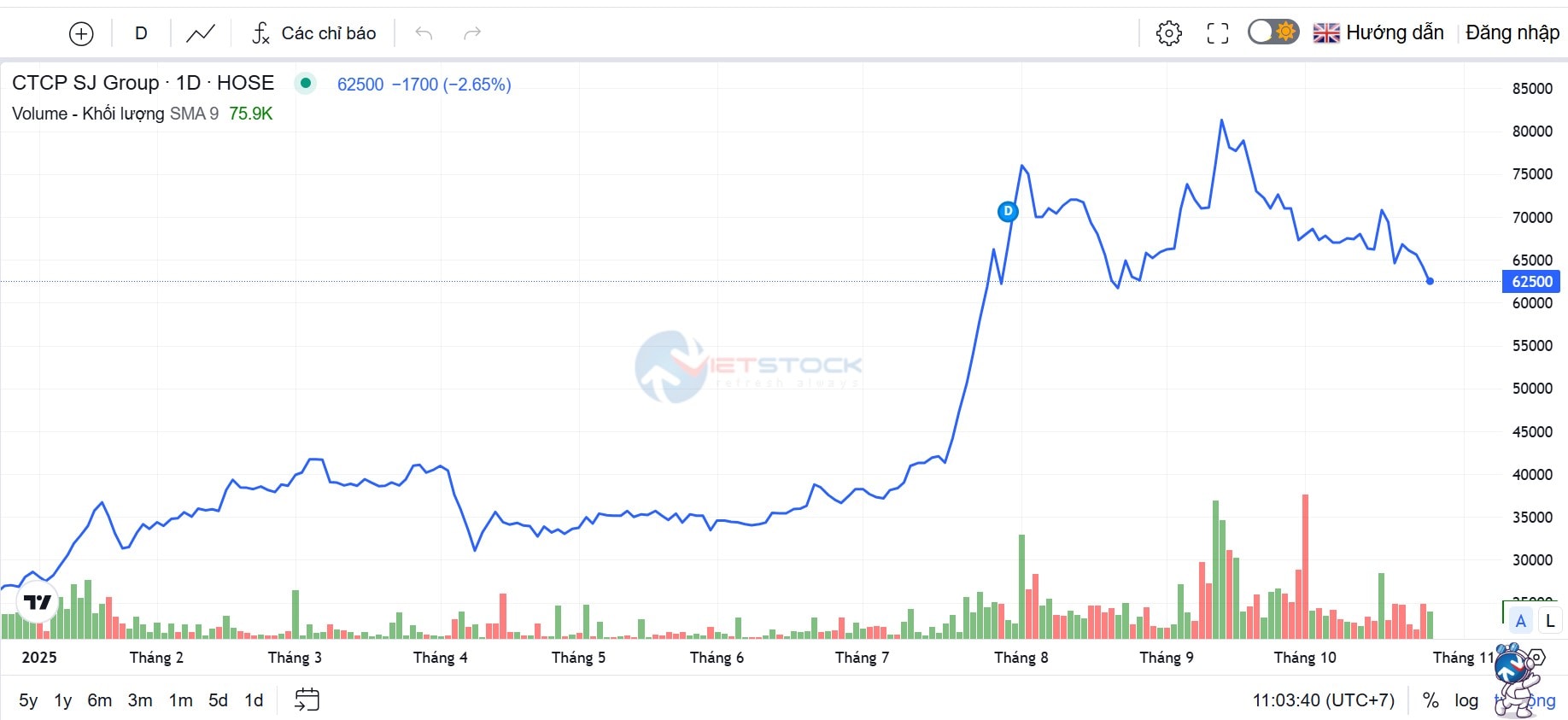SJS's Q3 profit plunges sharply on no real estate revenue
With zero revenue from its real estate segment, SJ Group JSC (HoSE: SJS)’s third-quarter profit plunged 93%, marking its lowest quarterly profit in the past 12 quarters.
According to the Q3/2025 financial report of the SJS, the property developer experienced a dismal quarter, with net revenue dropping 79% year-on-year to just VND 27 billion. Notably, the company did not record any revenue from its core business — real estate development.

Nam An Khanh New Urban Area, a flagship project by SJS – Photo: SJS
After deducting cost of goods sold, gross profit fell 90% from a year earlier to nearly VND 7 billion, with the gross margin shrinking from 55% to 26%. Despite strong cost-cutting efforts, net profit after tax reached only over VND 3 billion, down 93% year-on-year — the weakest quarterly result in the past three years.
Company executives explained that the sharp decline stemmed from ongoing investments in project development, resulting in delayed revenue recognition.
For the first nine months of 2025, SJS posted net revenue of nearly VND 371 billion, up 2% year-on-year, while net profit after tax rose 21% to over VND 174 billion. However, this represents just 31% of the full-year revenue target and 29% of the annual profit plan.

On the stock market, SJS shares are trading around VND 62,500 per share, down 23.4% since mid-September.
Contrary to SJS’s weak results, Vietnam’s real estate market showed positive momentum in the first nine months of 2025. According to the Vietnam Association of Realtors Institute for Real Estate Market Research (VARS IRE), housing supply exceeded 100,000 units, up 22% compared with all of 2024. Of these, more than 86,000 were new units, 1.3 times higher than the total new supply of last year. The remainder came from existing inventory, which is gradually decreasing thanks to recovering demand and supportive credit policies.
New supply has become more geographically diversified, expanding from core urban centers to satellite and tier-II cities. The North accounted for 49% of new supply, followed by the South (27%) and Central region (23%), with the latter rising sharply by 10 percentage points as developers accelerated projects in anticipation of a market rebound.
Market dynamics and pricing trends
Data from MBS Research, citing the Ministry of Construction, showed that real estate transactions rose modestly by 1% year-on-year in the first nine months of 2025. However, average primary prices surged—up 33% in Hanoi and 36% in Ho Chi Minh City, signaling that affordability has become a growing concern.
Q3/2025 also marked the initial phase of provincial and municipal mergers, which MBS Research noted could spark localized “land fever.” Still, it emphasized that sustainable price growth would depend on infrastructure improvements and economic growth fundamentals. Meanwhile, new supply continued to expand in both Hanoi and Ho Chi Minh City.
For property developers, MBS Research highlighted a series of new legal reforms aimed at easing bottlenecks and stimulating supply. These include:
- Resolution 171/2024/QH15: expanding land-use purposes for development projects;
- Resolution 201/2025/QH15: piloting special mechanisms for social housing;
- Adjustments to master planning in selected subzones.
Despite an active sales pipeline in Q3, MBS noted that most handovers came from existing projects rather than newly launched ones.
According to Do Thu Hang, Senior Director of Research & Consulting at Savills Hanoi, the capital city’s housing market is expected to expand in the long term. Backed by Resolution 171/2024/QH15 and upcoming housing policies for 2025–2030, more supply is anticipated from suburban areas.
In addition, social housing and affordable apartment initiatives are gaining traction, with some projects priced around VND 25 million/m². Hang noted that Hanoi’s real estate market will become increasingly segmented by location and project quality. Pilot housing projects, institutional reforms, and infrastructure investment—particularly beyond Ring Roads 3 and 3.5—are expected to positively influence overall price levels in the coming years.








